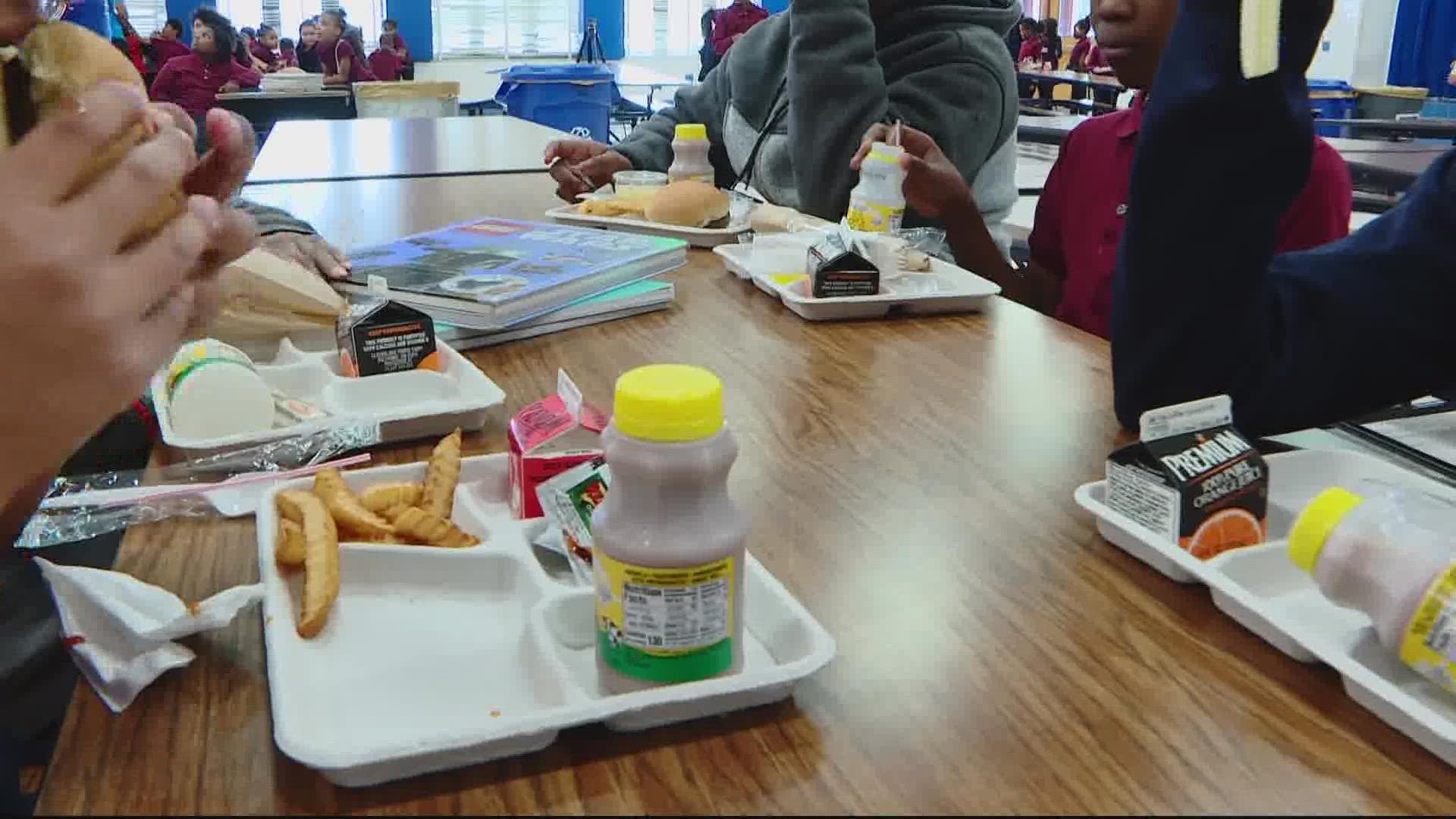PRINCE WILLIAM COUNTY, Va. — Editor's Note: The video above was published on Aug. 8, 2022.
Now that the school year has begun, summer food programs are coming to an end and free lunch is no longer available to all students for the school year. So how are kids that are experiencing food insecurity accessing necessities as the school year begins?
According to Adam Russo, the director of food and nutrition for Prince William County Public Schools, families can apply for the free and reduced food program for their schools. The program is back after a two-year hiatus due to the COVID-19 pandemic, where all students were offered free breakfast and lunch.
Earlier this summer, the United States Department of Agriculture (USDA) announced that changes would be coming this fall to schools across the country regarding free lunches. However, not all schools will see an end to the free lunch for all program. Thirty-seven schools in Prince William County will continue to provide free breakfast and lunch to students as part of the Community Eligibility Provision Program. For the full list of schools providing free meals click here.
Food insecurity continues to be a pressing issue for many in the DMV area with Prince William County tying alongside D.C. as the second most food insecure community in the DMV region, according to Capital Area Food Bank’s Hunger Report 2022.
Despite not all schools offering free meals to students, families can apply to the program, however, there are specific eligibility requirements. According to Russo, a person must make a certain amount below the national poverty line depending on their household income, according to the USDA.
The USDA also states on its website that students who live in a household with anyone on SNAP, TANF, or FDPIR benefit programs are eligible for free and reduced lunch programs. Students who are experiencing homelessness, in foster care, children of migrant workers and runaway youth are eligible as well.
Families can apply by mail or online, but Russo said the County is urging people to do it online for a quicker turnaround time. The forms are available in English and Spanish, however, Russo noted that the County translates the applications into other languages for families as well.
“Generally, we’re turning them around in less than 72 hours. Most of the time it's 12 hours. It really just depends on the volume and the time of the week honestly,” said Russo.
Because the lunch program requires certain income eligibility, those who may make a little more than the requirement yet still face food insecurity will not be able to be part of the program. Despite this, Russo said a child will not be denied food at school. Whether a debt incurs on the student’s account, there are some options for parents who may need a little extra help to pay it off.
“If the student is unable to pay, that is not the business of the student and it is not the business of my staff,” said Russo. Payment plans have been arranged for some families who need assistance with paying for meals, Russo further explained.
The free and reduced lunch program only applies during school hours, meaning that over holidays and breaks, eligible students will not be able to get free breakfast and lunch from school. Prince William County's education foundation SPARK (Supporting Partnerships and Resources for Kids) works to bridge that gap during the holidays and on weekends.
Dawn Davis, the executive director of SPARK, said that the organization partners with community-based organizations to provide resources to students outside of school. Davis noted that SPARK is looking to increase the impact on the Prince William County community for this school year.
"We know around the holidays and also especially during the summer when school is out there is still a need and there's still food insecurity," said Davis.

